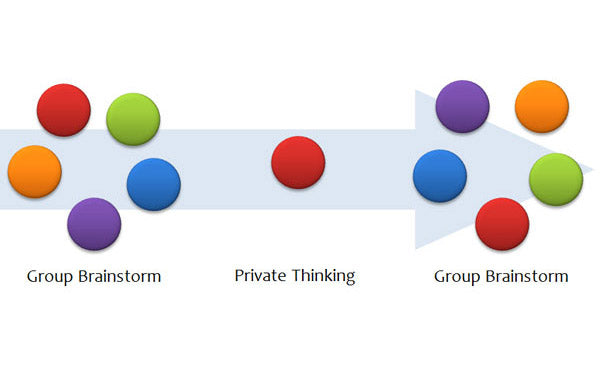Purpose
Words can sometimes limit creativity. Humans are generally very visual and have evolved to sense the world primarily thorough focused looking and observation. As a result, a large part of the brain is dedicated to visual processing.
To analyse problems we can tap into this huge potential processing power by visualising problems. There have been many studies in this area which has led to exceptionally useful tools such as mind maps which are great for creative thinking.
This exercise helps delegates to express a problem using images. It is much more free flow than mind maps as it is not restricted to any particular method. This allows people to think more visually about a problem and break through the limitations imposed by thinking primarily in words.
Pictorial problem solving is also ideal for brainstorming as it makes it easier to communicate ideas.
Objective
Draw images and diagrams to describe a problem so you can symbolise various aspects of it in one large drawing.
What You Need
- Flipchart sheets
- Coloured pens
Setup
- Divide the delegates into groups of 2 or 3.
- Make the flipcharts and coloured pens available to all groups.
- Explain that each group must identify a problem that they will be working on during this exercise. Ideally this problem should be related to a group members’ job which can be shared with other easily.
- Each group must use flipcharts to draw the problem and visualise it. Visualisation can be very personal so it is best if each person has a separate sheet available to draw on. The group must work together on the same problem, but each can draw on their own respective sheets. They can get inspired by each other’s drawings as well and should communicate with each other while going through this part of the exercise.
- Encourage the group to draw using a variety of colours. They should use symbols to represent information in a compact but meaningful way. They don’t have to use mind maps, but if they want to include it, they are free to do so. If they have access to computers and printing, they can create a collage and include pictorial materials as reference.
- Allocate 15 minutes for the drawing part.
- Now ask the groups to work together and write a paragraph based on all their drawings. This should effectively summarise their thoughts on the problem and potential solutions.
- Bring back all groups together. Ask each group to present their problem, their drawing, the symbols, the thought process they went through and the associations that led them to a particular solution. Encourage other groups to provide feedback accordingly.
- Continue until all groups have presented their work.
- Follow with a discussion.
Timing
Explaining the Exercise: 2 minutes
Activity: 2 min defining the problem + 15 min drawing + 5 min write paragraph + 15 presentations = 37 minutes
Group Feedback: 10 minutes
Discussion
How creative was this process in solving the problem? Did you come up with a lot of related ideas? Did you get inspired by the drawings of your partner? How does drawing and pictorial methods compare to thinking in words? What did you think of other groups’ approaches? What would you do differently next time to solve a problem visually?
Soft Skills Training Materials
Get downloadable training materials
Online Train the Trainer Course:
Core Skills
Learn How to Become the Best Trainer in Your Field
All Tags
Training Resources for You

Course Design Strategy
Available as paperback and ebook

Free Training Resources
Download a free comprehensive training package including training guidelines, soft skills training activities, assessment forms and useful training resources that you can use to enhance your courses.

Our Comprehensive Guide to Body Language

Train the Trainer Resources
Get Insights - Read Guides and Books - Attend Courses
Training Materials
Get downloadable training materials on: Management Training, Personal Development, Interpersonal Development, Human Resources, and Sales & Marketing














Leave a comment
All comments are moderated before being published.
This site is protected by hCaptcha and the hCaptcha Privacy Policy and Terms of Service apply.